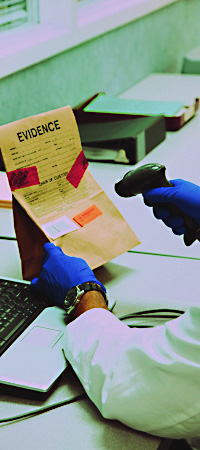Home | Glossary | Resources | Help | Contact Us | Course Map
Archival Notice
This is an archive page that is no longer being updated. It may contain outdated information and links may no longer function as originally intended.
Time Between Evidence Submission and Start of Analysis
This phase begins when evidence is submitted to the laboratory and typically describes the laboratory's backlog of cases waiting for analysis. In some laboratories, biology/DNA analysts participate in the receipt process, while in others, technicians or other laboratory personnel are involved. This presents another opportunity for the law enforcement agency to communicate directly with the analyst. Once evidence is signed into the laboratory, it must be marked for identification, entered into the laboratory's information management system (LIMS), and appropriately secured for storage.
Laboratories have established methods for prioritizing cases. Depending on the laboratory's prioritization scheme, analysts may select cases to process or cases may be assigned by a supervisor.
Additional Online Courses
- What Every First Responding Officer Should Know About DNA Evidence
- Collecting DNA Evidence at Property Crime Scenes
- DNA – A Prosecutor’s Practice Notebook
- Crime Scene and DNA Basics
- Laboratory Safety Programs
- DNA Amplification
- Population Genetics and Statistics
- Non-STR DNA Markers: SNPs, Y-STRs, LCN and mtDNA
- Firearms Examiner Training
- Forensic DNA Education for Law Enforcement Decisionmakers
- What Every Investigator and Evidence Technician Should Know About DNA Evidence
- Principles of Forensic DNA for Officers of the Court
- Law 101: Legal Guide for the Forensic Expert
- Laboratory Orientation and Testing of Body Fluids and Tissues
- DNA Extraction and Quantitation
- STR Data Analysis and Interpretation
- Communication Skills, Report Writing, and Courtroom Testimony
- Español for Law Enforcement
- Amplified DNA Product Separation for Forensic Analysts


